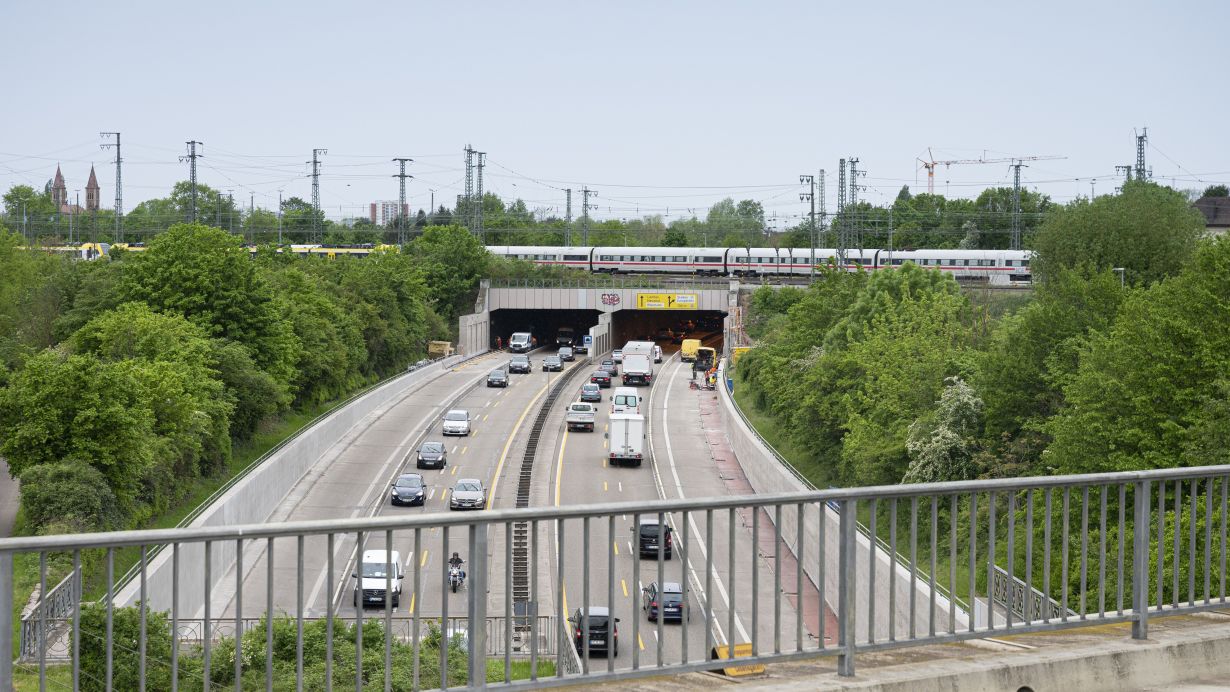According to the German Environment Agency, German citizens perceive road traffic as the biggest source of noise. 76 percent of the German population feel disturbed or annoyed by road traffic. For the protection of the population, EU regulations specify noise emission limits that are being tightened gradually. To comply with the new limits under real traffic conditions, researchers of Karlsruhe Institute of Technology (KIT), in cooperation with partners from industry, administration, and science, are developing measures to reduce tire-road noise emissions under the "tyre road noise project". They are working on a data-based computation model for the pass-by noise of vehicles with the help of artificial intelligence (AI) methods. On the occasion of the kickoff, Michael Theurer, Undersecretary of State with the Federal Ministry for Digital and Transport, handed over the grant notice to the consortium today (December 18, 2023).
Click here for photos taken during the kickoff event:
“Ambitious research projects are the basis for innovations being tested and proving their suitability in practice. The know-how and smart minds of KIT and its partners are the prerequisites for the success of the TyRoN project. A unique consortium works on a promising idea to actively shape the future of mobility. This is a great occasion to experience the effect of supporting data-based innovations. The Federal Ministry for Digital and Transport supports and funds innovative projects, such as tyre road noise, to make mobility safer, more efficient, and more sustainable,” says Michael Theurer, Undersecretary of State with the Federal Ministry of Digital and Transport.
“When transforming our mobility system, reducing of disturbing noise in road traffic is an important aspect,” says Professor Thomas Hirth, KIT Vice President Transfer and International Affairs. “We have established an excellent consortium of partners from automotive industry and science as well as from KIT’s AI and mobility research for work on the tyre road noise project. Together, we are determined to reach important milestones on the way towards low-noise road traffic.”
Prior to vehicle registration in Germany, new vehicles are subjected to a test procedure to prove that legally specified noise emission limits are not exceeded. “When approving a new type of vehicle, the pass-by noise level is measured by microphones on a specially asphalted road to confirm that it is below the limit specified by law. However, the test environment can hardly be compared to driving situations on real roads,” says Michael König from KIT’s Institute of Vehicle Systems Technology, the coordinator of tyre road noise. Development of new measures to comply with limit values on ordinary roads requires vast amounts of noise emission measurement data. “This is associated with a big effort: A multitude of combinations of vehicle, tires, road, and environmental conditions may be accounted in real traffic. A precise prediction of noise emission would strongly reduce the number of measurements required. For this, we need better models than those available,” König adds.
Consideration of Road, Tire, Driving Mode, and Weather
The new computation model will consider the large range of parameters of the road, tire, driving mode, and weather that influence noise emission, the goal being to generate a comprehensive database of different pass-by noises. “From the resulting data collection, we will derive noise reduction measures,” König says. “The new computation model will also help improve the conversion of noise measurement results to real traffic. The measurements expenditure needed for studying and optimizing more operation conditions will then be reduced.”
Vehicle Fleet Measures Pass-by Noise
For the development of the model, a fleet of vehicles made by various manufacturers is used to measure the pass-by noise in various environments using new measurement techniques. In parallel, other sensors measure the parameters influencing noise emission. Then, AI methods are used to generate a model to predict the pass-by noise and to determine the relevant parameters influencing the tire/road noise emission. Within the framework of the project, the measurement technologies and AI models required are developed and validated by measurements in controlled environments. After completion of the project, the models and data will be published in a generally accessible database.
About tyre road noise
Apart from KIT’s Institute of Vehicle Systems Technology and the Institute of Applied Informatics and Formal Description Methods, the following partners from automotive and tire industry as well as from research are involved in the project: Audi AG, BMW AG, Federal Highway Research Institute, Continental AG, EYYES Deutschland GmbH, Dr. Ing. h.c. F. Porsche AG, RA Consulting GmbH, RWTH Aachen (Institute of Highway Engineering – ISAC), and Volkswagen AG. Under the mFUND innovation initiative, the Federal Ministry for Digital and Transport (BMDV) funds the projects with about EUR 3 million for a duration of three years. Total project costs amount to about EUR 3.7 million.
For more information in German, click: https://bmdv.bund.de/SharedDocs/DE/Artikel/DG/mfund-projekte/tyron.html
About the mFUND Funding Program of the Federal Ministry for Digital and Transport
Under the mFUND innovation initiative, BMDV has been supporting data-based research and development projects for future digital and networked mobility since 2016. Project funding is complemented by the active networking of actors from politics, industry, administration and research, and by the supply of open data on the Mobilithek exchange platform.
updated on 06.02.24: Corrected project title: "Tyre Road Noise" (instead of abbreviation "TyRoN").
Being “The Research University in the Helmholtz Association”, KIT creates and imparts knowledge for the society and the environment. It is the objective to make significant contributions to the global challenges in the fields of energy, mobility, and information. For this, about 10,000 employees cooperate in a broad range of disciplines in natural sciences, engineering sciences, economics, and the humanities and social sciences. KIT prepares its 22,800 students for responsible tasks in society, industry, and science by offering research-based study programs. Innovation efforts at KIT build a bridge between important scientific findings and their application for the benefit of society, economic prosperity, and the preservation of our natural basis of life. KIT is one of the German universities of excellence.

